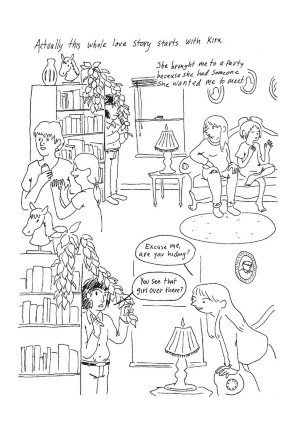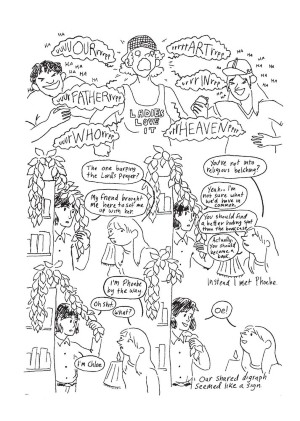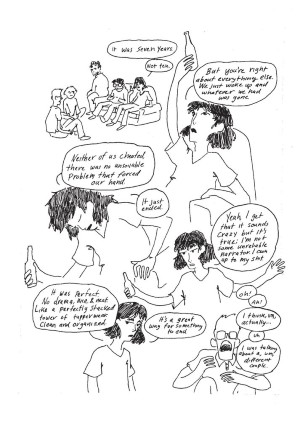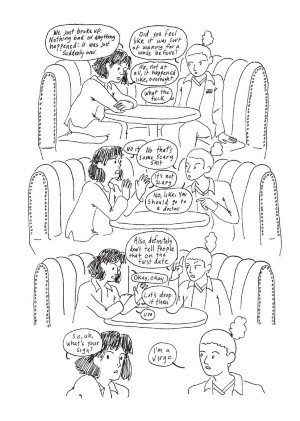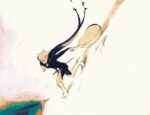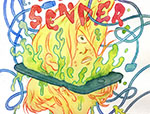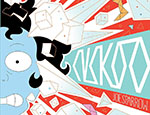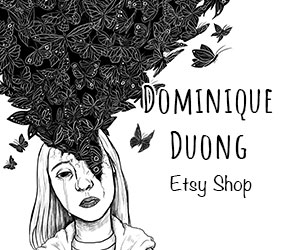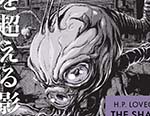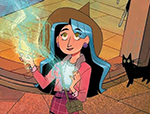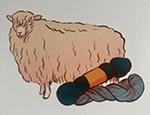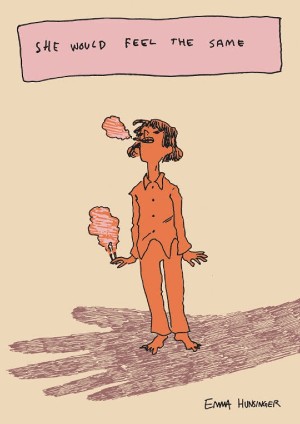 She Would Feel the Same is a beautifully made book creating a detailed depiction of a break-up. It gives a refreshing take on the idea with a less dramatic portrayal of what happens when you fall out of love. In a loose line driven-style, Emma Hunsinger brings the protagonist Chloe and her inner-world to life. The lack of panel borders gives the story a sketched natural diary-like feeling, drawing the reader into its complicated emotional heart. The lettering also has a fairly loose handwritten style, lending itself well to expressing the protagonist’s personal interpretations.
She Would Feel the Same is a beautifully made book creating a detailed depiction of a break-up. It gives a refreshing take on the idea with a less dramatic portrayal of what happens when you fall out of love. In a loose line driven-style, Emma Hunsinger brings the protagonist Chloe and her inner-world to life. The lack of panel borders gives the story a sketched natural diary-like feeling, drawing the reader into its complicated emotional heart. The lettering also has a fairly loose handwritten style, lending itself well to expressing the protagonist’s personal interpretations.
As stated the book primarily surrounds a break-up between characters Chloe and Phoebe, and how this affects Chloe’s life. It introduces the story through one of the couples conversations pre-break-up, discussing The Road by Cormac McCarthy and how Chloe views it as a love story. The beginning simultaneously introduces the characters and the theme of love in a more casual conversational way, setting the tone for the rest of the book. It also adjusts the audience to the idea of exploring both past and future.
The visuals suit the narrative style well, creating a deeper connection between the story’s protagonist and the reader. Early on we are introduced to Chloe and Phoebe’s break-up through a third party, during a conversation in which Chloe is in the room but the person describing their break-up is unaware that she is present. Through the course of the discussion he describes the couple variously as robots, a rat, and cavalier: all of which Hunsinger depicts Chloe as within this scene, adding a sense of awkward humour to the situation. The expressions of the other participants in the conversation also assist in displaying the awkward nature of this man’s comments, underlining the work’s humorous tone straight away.
Throughout, the dialogue portrays each character with a natural quality – the entire work founded in reality to some degree. This believability makes the reader connect with the story on a deeper level. The exploration of dating again post-break-up displays a variety of ways to meet people, as well as people’s expectations concerning dates and shows how discussions of the future and thoughts about what you want to get out of life and relationships can have an impact on your mental and physical health. The motif of Chloe waking up in numerous positions helps display how dwelling on things can impact your view in both positive and negative ways, exploring how the past has an effect on the present.
The concept of perfection is considered throughout the book- the discussion of whether Chloe and Phoebe’s break-up was a “perfect” or ideal break-up comes up multiple times. Chloe argues at one point that she would like one aspect of her life to be perfect, bringing the idea of whether something can truly be perfect to the forefront of the discussion. This is also explored through the characters, making the idea of perfection to be a kind of end goal, although displaying this idea with a critical eye.
Overall, the book is a captivating look at relationships and what people want to get out of them. The story draws out many interesting questions about why people do particular things or have particular goals in relationships. DIsplaying the act of getting some kind of closure after a long-term relationship makes it possible to bring up the idea of why things don’t work out alongside other themes, such as how society has particular expectations of what a break-up is and whether anything can be truly perfect. This work connects with the audience through its flexible and personal art style, bringing the reader straight into Chloe and Phoebe’s story.
This engrossing graphic novel is both beautiful and thought-provoking.
Emma Hunsinger (W/A) • Shortbox, £9.00
Review by Holly Raidl





